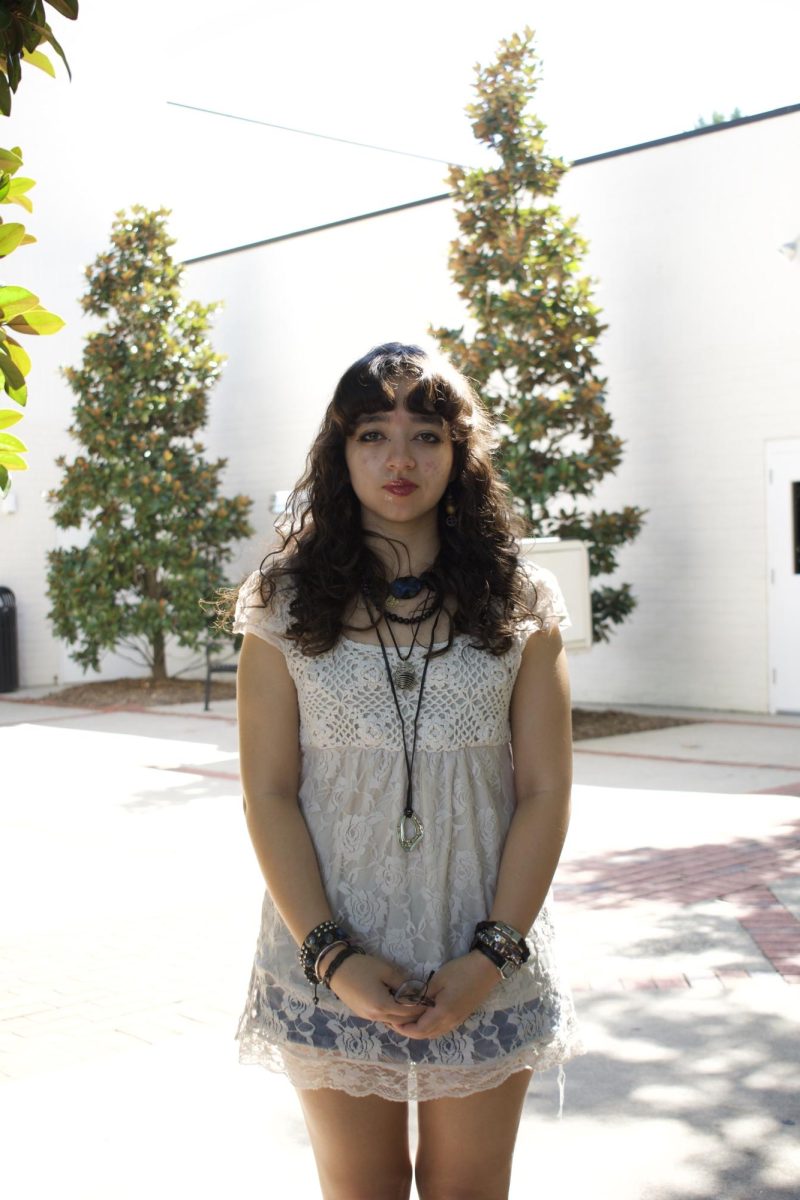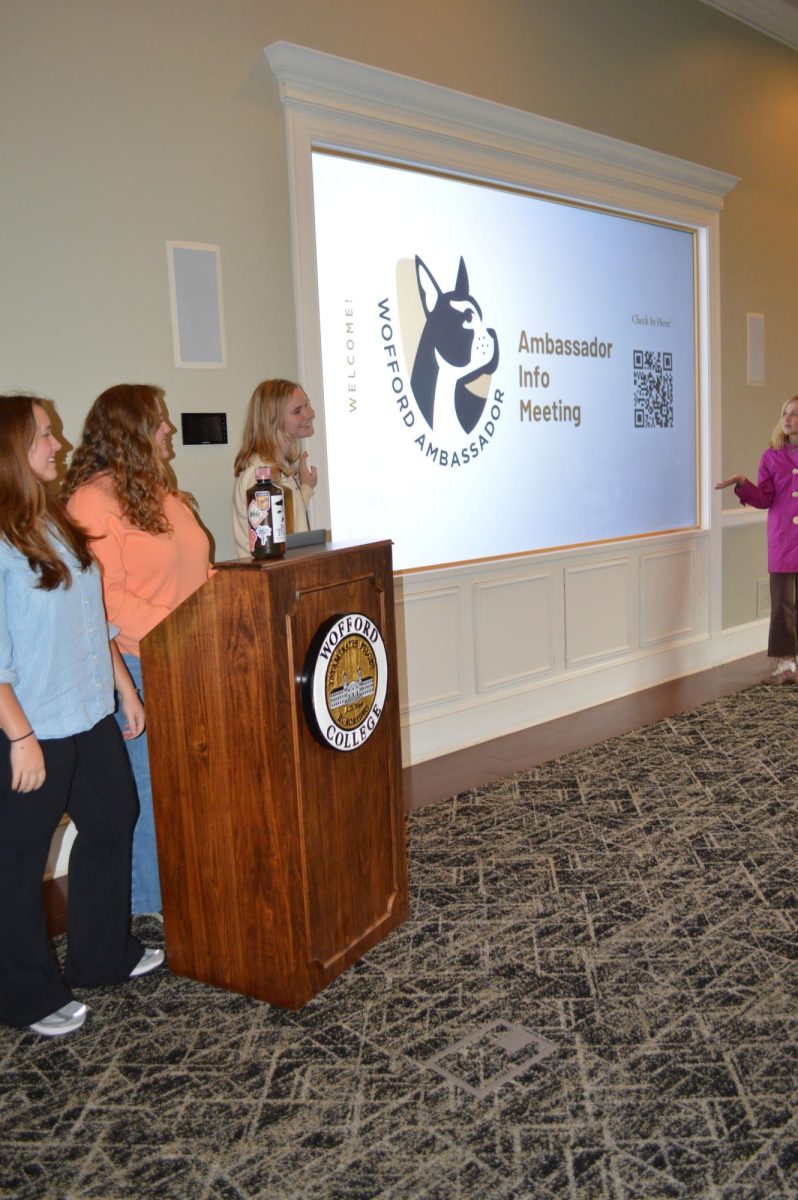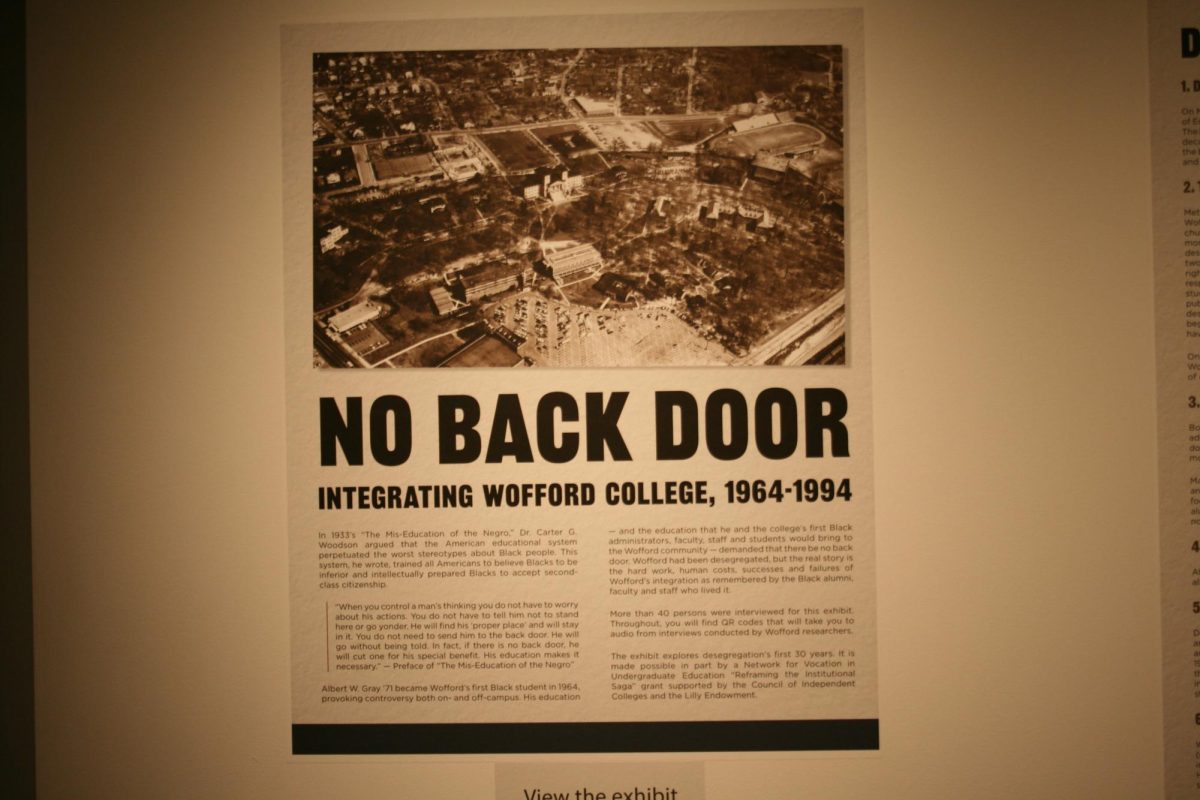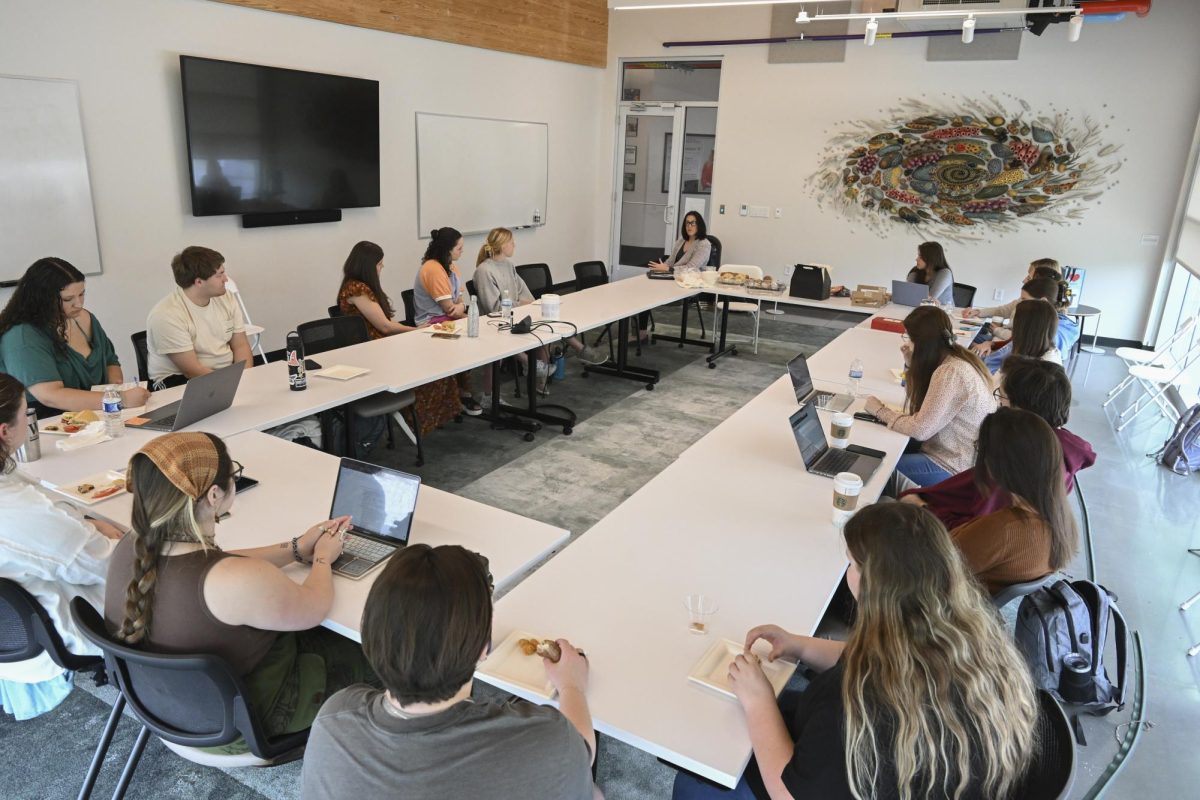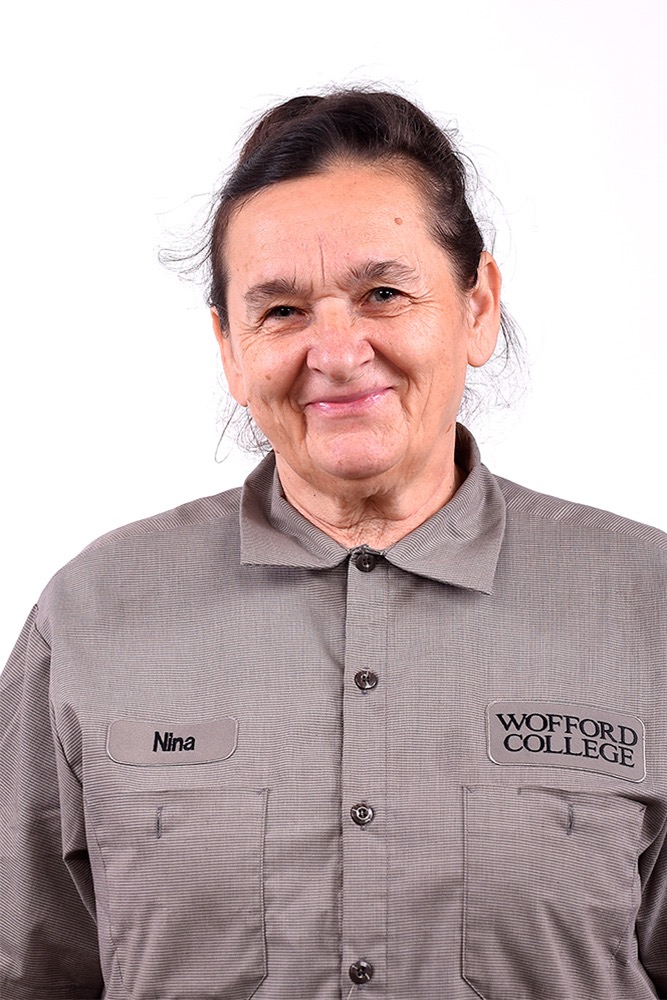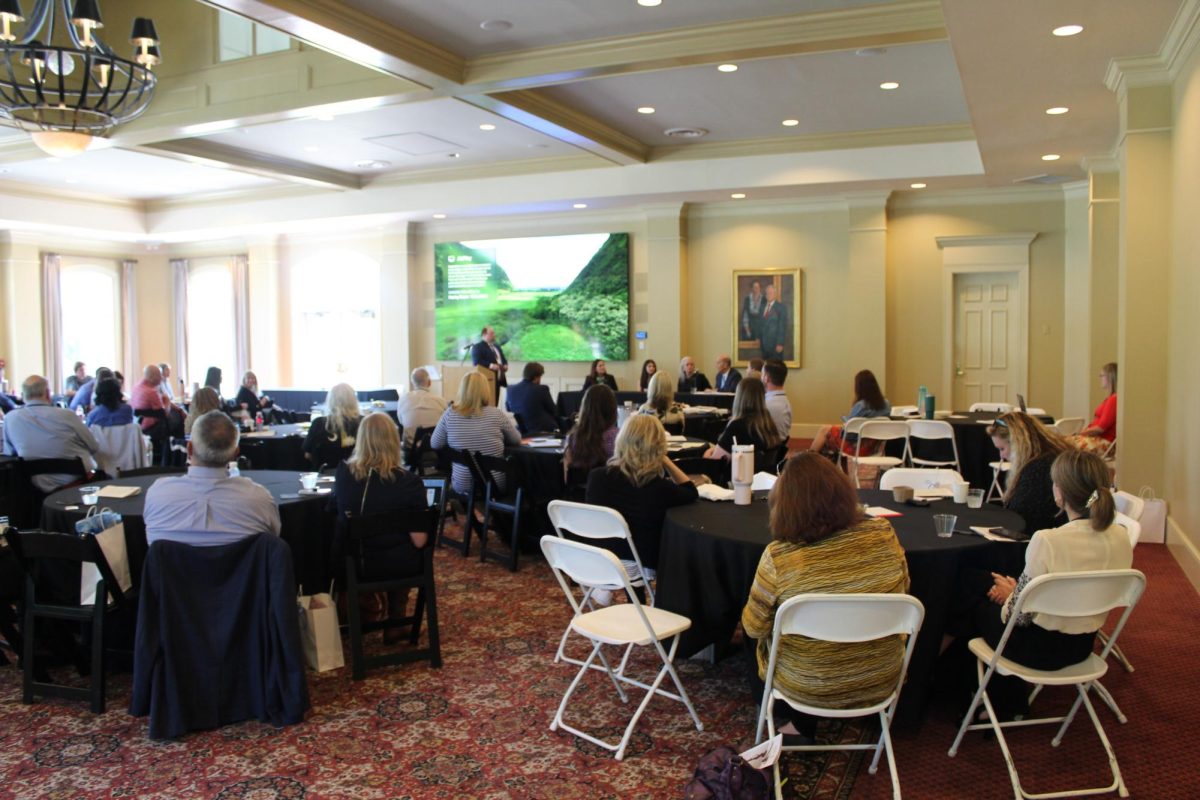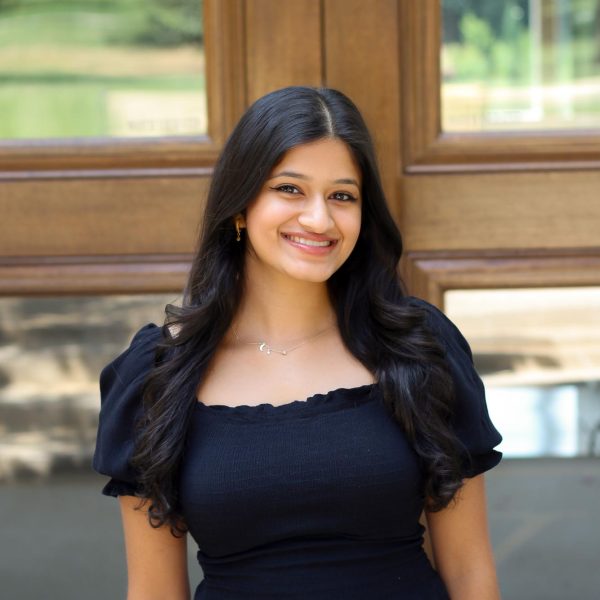Sept. 7, 2024 commemorated the 60th anniversary of Wofford’s desegregation. In tribute to all the Black students and faculty members who joined Wofford amidst the racial tension between 1964 to 1994, Dwain Pruitt curated the “No Back Door” exhibition to spotlight this milestone in Wofford’s history.
Pruitt, Chief Equity Officer and Vice President of Community Initiatives, shared in the opening speech to the exhibition that the incentive to honor the Black members of the Wofford community came from the prospect of capturing the local stories that had never been shared before.
This exhibition took two years to complete, during which each summer, a team of undergraduate researchers from Wofford conducted interviews and developed the exhibition. In the summer of 2023, Daniel Brasington ‘25, Danny Inman ‘25, Chris Green ‘25, Laila Villeda ‘26 and Zion Sampson ‘26 helped to interview 45 alumni.
Located in the Martha Cloud Chapman Gallery of the Sandor Teszler Library, there are 16 panels posted chronologically around the room. Along with the array of compositions and pictures, there are QR codes at the bottom of each panel to let the audience listen to audios of the interviews. This allows the viewer to immerse themselves in the stories being told by the alumni and get a glimpse of their personality.
In addition to the interviews, articles from Wofford’s archives and the Old Gold and Black newspapers were used to gather stories of the Black members. There are not many physical artifacts about the Black community of Wofford during the years they first integrated.
“These audios are the substance of the project as they include the black experience of Wofford,” Pruitt said.
Pruitt highlights that “No Back Door” refers to the misconception that for a certain type of person, the American education system made it necessary for that individual to seek a back door, to seek a second-class status. However, there will be no back door. The students who integrated into this institution should come through the front door.
The first black students at the college had a different kind of courage. In 1964 when these students entered they were only young adults themselves. Their strength attending Wofford where racial violence was common, is something that should be honored and kept in the back of the minds of students.
Villeda had the opportunity to interview a few of the Wofford alumni and hear their stories first hand. Through eye opening encounters, Villeda was able to create connections with the interviewees outside of the process and obtain advice about getting through college and life.
“It was not just about meeting these people, but also building connections,” Villeda said.
When hearing the stories of the first Black male students, Villeda recalls feeling surprised.
“It made me sad to hear the bad stories because when they were bad, they were really bad. That hurt me because it really brought to light that it wasn’t that long ago,” Villeda said.
She emphasizes the idea that these students and faculty members were the trailblazers.
“All the people we interviewed went through this at our age and are still alive to this day with memories of their experiences,.” Villeda said.
This past summer, Daniel Brasington ‘25, Aubrey Chapman ‘25, Josh Harris ‘25, Hayden Pendergrass ‘26 and John Luke Taylor ‘27 worked to develop and design the exhibition.
Pendergrass assisted with writing the interviews and wrote three features. When asked about his experience, Pendergrass conveyed his appreciation for this opportunity.
“It was very comforting to know there were other people who shared my experience as a Wofford student, even though they were from past generations,” Pendergrass said.
Pruitt ended the prologue of the exhibition with advice for everyone at Wofford.
“The past paid a significant price for the present, therefore we in the present must be willing to pay the same price for the future,” Pruitt said.
This exhibition is not about segregation, but about integration. It took Wofford at least 30 years to be integrated. This exhibit portrays the process by which Wofford College transformed into being culturally evolved and inclusive, however, there will be no sugarcoating in the process to do so.
The exhibition is open to all audiences and everyone is encouraged to visit to learn about the experiences that the first Black students and faculty members had to endure in order to survive the extreme racial aggression of this era.
As it has only been 60 years, it is imperative that we, as the student body, continue to speak and learn about the history of Wofford to honor those who came before us and paved the way for all minorities to find their place in a predominantly white institute.



